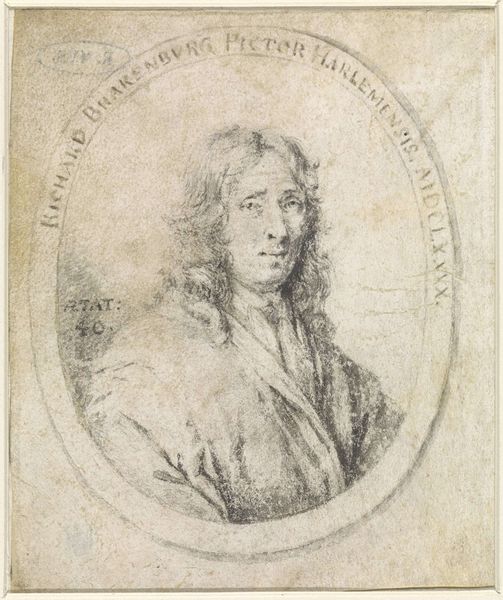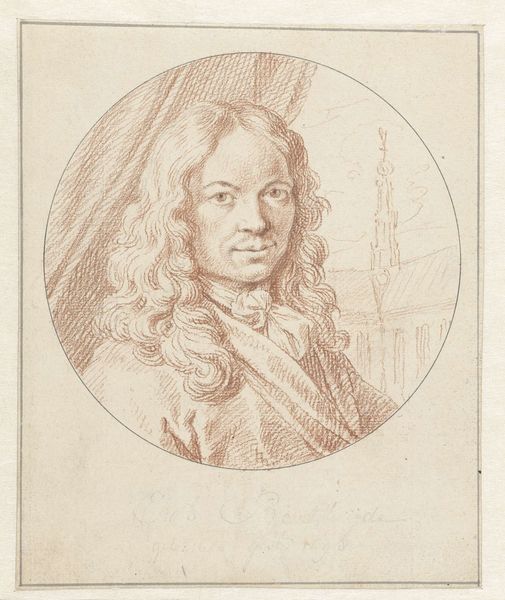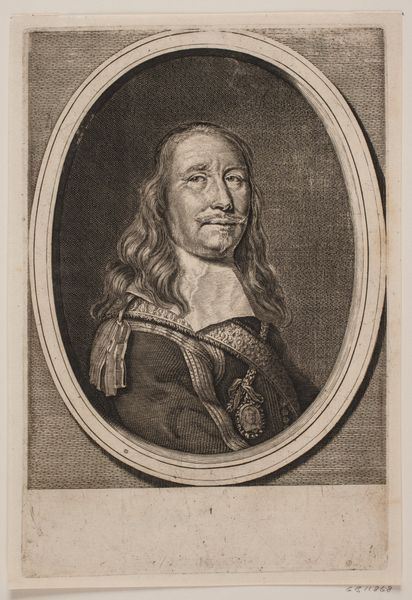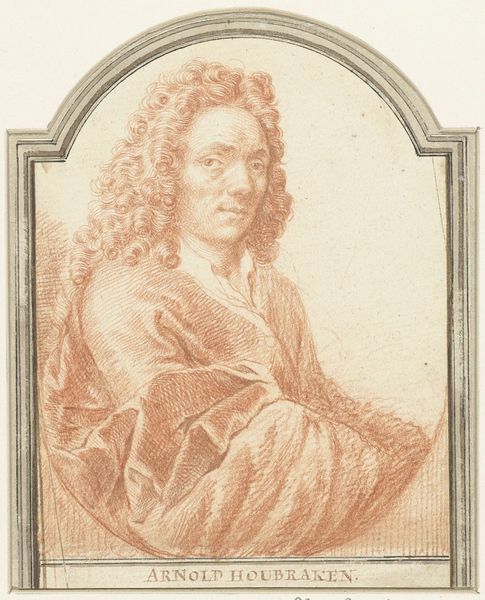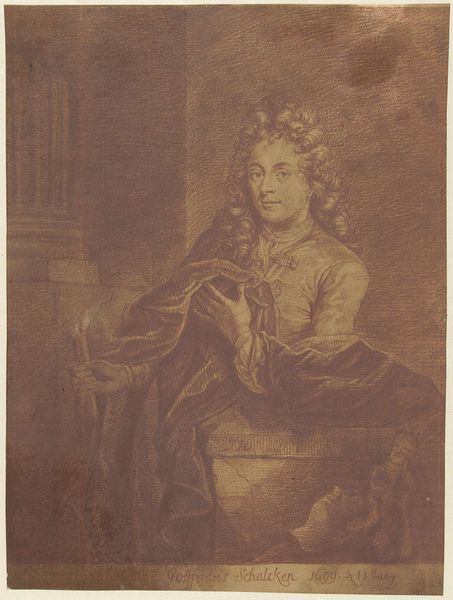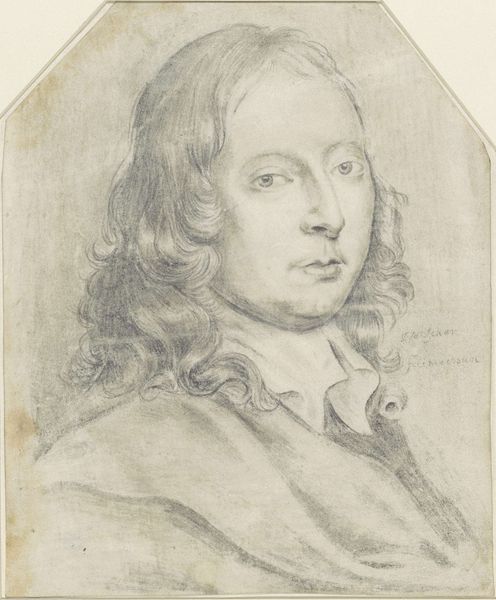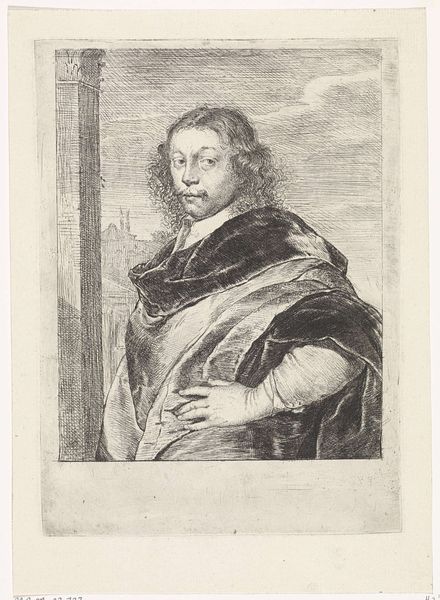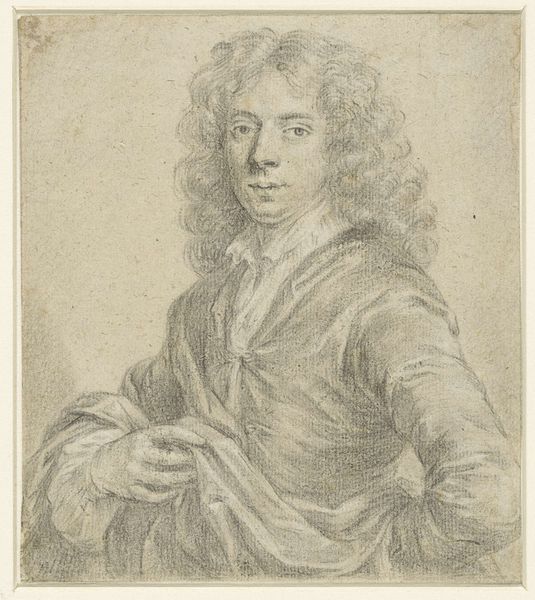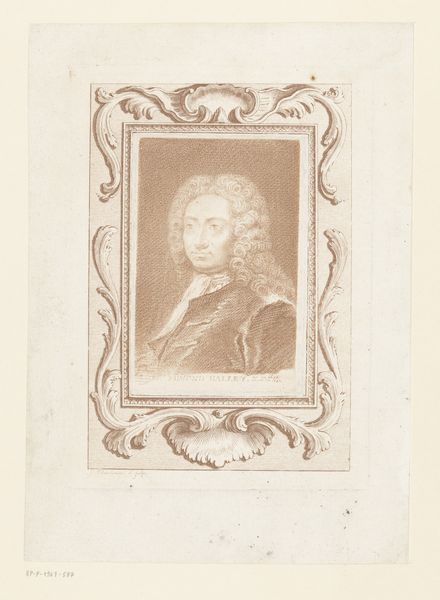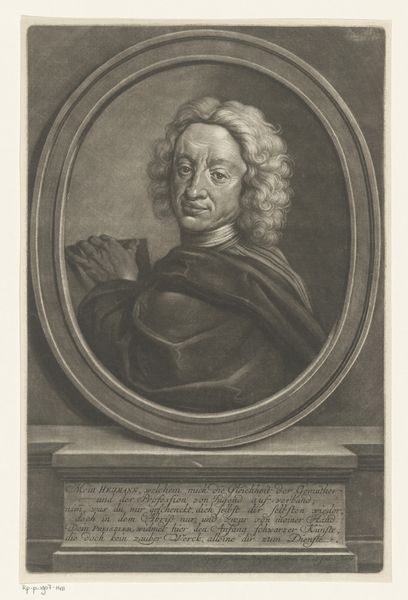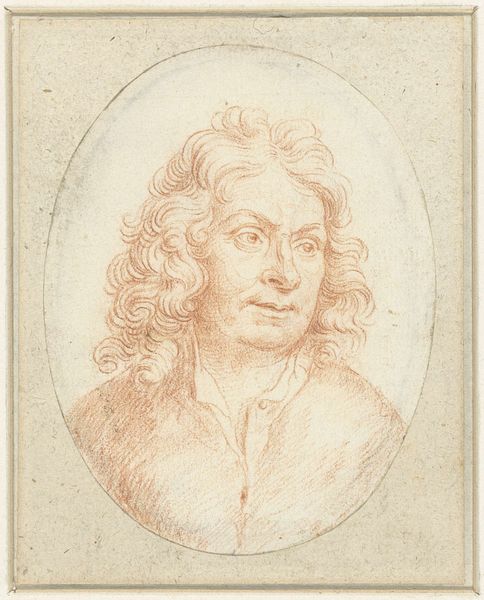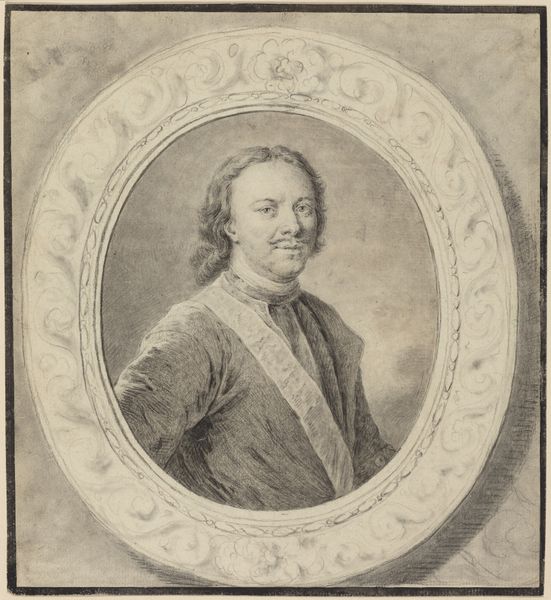
paper, ink, engraving
#
portrait
#
baroque
#
charcoal drawing
#
paper
#
ink
#
portrait drawing
#
engraving
Dimensions: height 519 mm, width 413 mm
Copyright: Rijks Museum: Open Domain
Curator: Well, here we have "Borstbeeld van een man," or "Bust of a Man," an engraving by Augustinus Terwesten I, dating from approximately 1659 to 1711, currently held in the Rijksmuseum collection. Editor: The first thing that strikes me is the monochrome palette, the subtle gradations of brown ink giving it a sepia-toned, almost antique feel. The line work is incredibly detailed, especially in the rendering of his hair and drapery. Curator: The meticulous detail points to the social function of portraiture at the time. It wasn’t merely about likeness, it was about constructing an image, defining status and perhaps even aspirations of the sitter. This would have been circulated among a particular social group, conveying specific messages about identity and standing. Editor: Precisely! And look at the oval frame surrounding him, with the suggestion of a landscape beyond. It seems to position him within a larger context, not just as an individual, but part of a world. It speaks to the institution of portraiture itself. But what of Terwesten's material choices here? Paper was readily available, and the engraving process allowed for relatively easy reproduction, making images like this accessible to a wider audience than a painted portrait. It democratizes representation, to a certain extent. Curator: I see what you mean, but remember access to images did not equate to access to societal advancement! The point of production here becomes interesting too: the use of paper and ink suggests this could be readily transferred and the social conditions around artisanal work might have affected what, how and why the engraving looked in a certain way. Editor: True, true. And the very act of commissioning a portrait engraving—whether painted or printed—participates in solidifying social and power dynamics. Regardless, for today’s visitor, it is valuable in illustrating those same points about cultural capital. It really highlights art's engagement with both society and economy, don’t you agree? Curator: Absolutely. The choice of technique, the material accessibility—they are all vital clues. Examining these production elements provides an important challenge to the hierarchical structure of traditional art and historical perspectives. Editor: So, next time, instead of just admiring this bust of a man, consider how its historical circulation and making informed broader systems of visual culture, power, and representation. Curator: Indeed, ponder what stories about social class and artistry exist within each layer of brown ink!
Comments
No comments
Be the first to comment and join the conversation on the ultimate creative platform.

